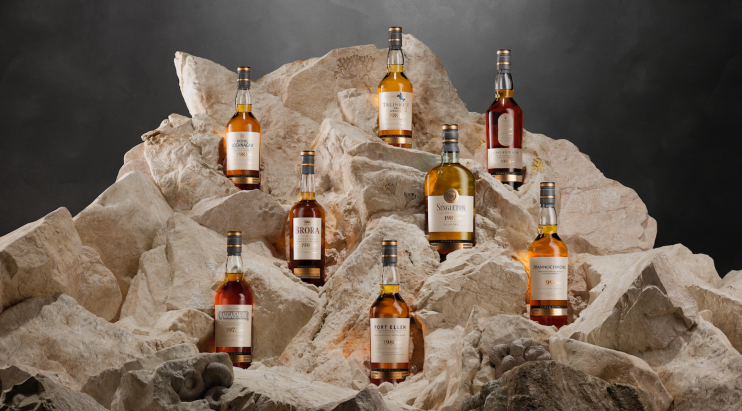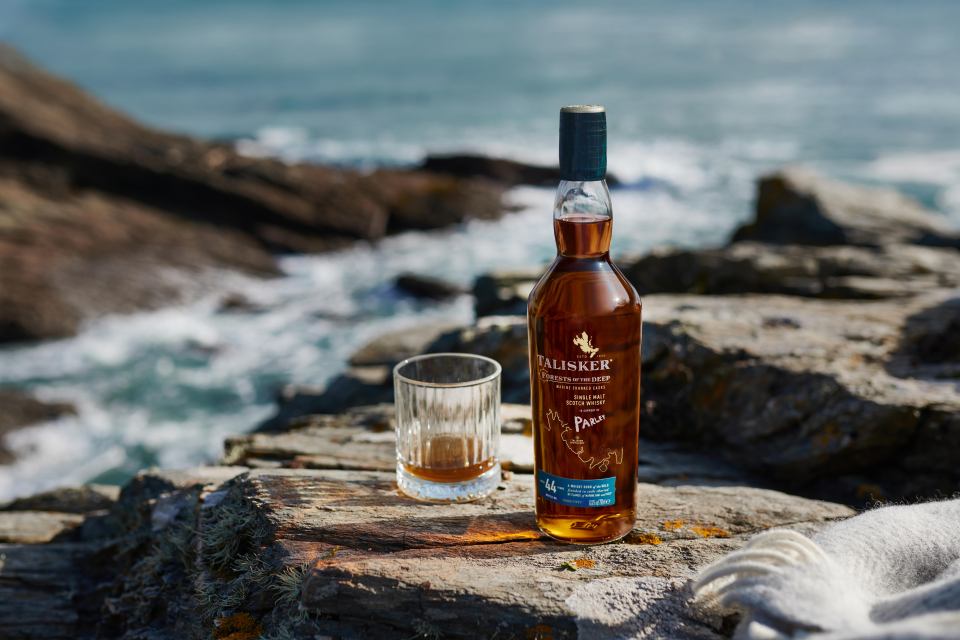The alpha and omega of single malt whisky

Diageo controls the world’s largest, most diverse portfolio of Scottish whiskies. With access to more than 9 million casks from around 30 distilleries – some of which are long closed – they can really roll out the barrel with their special releases, and that’s what they’re doing now with the third iteration of Prima & Ultima, their annual selection of rare and remarkable single malts.
The idea behind the Prima & Ultima collection is that it is made up of whiskies that are historic firsts or lasts of their kind. Ranging from 28 to 48 years of age, this selection showcases the effects of long maturation, and features a number of whiskies that are the result of experiments that may never be repeated.
This year there is a 40-year-old Royal Lochnagar, which is the result of an experiment to recover the angels’ share of whisky lost due to evaporation; a 48-year-old Cragganmore, which was one of the first whiskies produced after the distillery switched from coal- to steam-heated stills; and a 31-year-old Mannochmore, which is the result of a one-off experiment in long secondary maturation, having been transferred from its original refill casks, to spend almost three decades in highly active virgin European oak.
The 40-year-old Brora is an example of a less heavily peated whisky, and it is the final release of Brora stock from 1981. The 34-year-old Singleton of Glen Ord is a first, and last; it is the only release of whisky produced at the distillery in 1987, emptying all the remaining casks from that year. The 28-year-old Lagavulin is from the two last remaining casks from 1993; the 37-year-old Talisker is the last of their stock dating from 1984; and the 41-year-old Port Ellen is the oldest ever release from the distillery, and uses up the last two barrels of whisky produced at the distillery in 1980.
This is the first Prima & Ultima release to include whiskies from both Brora and Port Ellen. The presence of rare whiskies from the two famously collectable ghost distilleries, which closed in 1983, is certain to drive consumer interest. However, it is appropriate, because this year’s collection is curated by Dr Craig Wilson. Wilson is a Master Blender with more than 13 years experience, and his understanding of the maturation process, flavours and the history of whisky have proven essential in the reopening of the Brora distillery last year, and will shape the new releases from Port Ellen, when production recommences there in 2023.
Wilson said: “It is my honour to present the third release of Prima & Ultima, a collection of our rarest, most precious Single Malt Scotch Whiskies. I have personally selected each whisky with great care, each an exceptional spirit marking a special time in the distilleries’ history and whiskies that I’ve had the privilege to watch mature. I have also selected whiskies from Brora and Port Ellen. In the year we celebrate the Queen’s Platinum jubilee, I have selected the last ever Port Ellen 1980 cask, filled in the year Her Majesty visited the distillery’s maltings. The Brora bottling is equally as precious, taken from our last ever 1981 cask, making it one of our rarest Brora whiskies of all time.”
Only 317 full sets of the Prima & Ultima Third Release are available, RRP £36,500. Some bottles will be available for purchase individually. An online registration page will be open until 30 June: www.theprimaandultimacollection.com

Talisker 44-year-old: Forests of the Deep
If eight spectacular single malts is too many, you might want to consider buying just one; a 44-year-old Talisker, which is the distillery’s oldest release yet.
Talisker’s waterside location, on the Isle of Skye, gave rise to its tagline, “Made by the sea.” But this is more than a marketing slogan. There is a distinct maritime salinity to the spirit, and the brand has adopted a seafaring identity which extends to sponsorship of oceanic rowing challenges and marine conservation projects.
The specific inspiration for this release – dubbed “Forests of the Deep” – came from Parley for the Oceans, Talisker’s ocean conservation partner, who led an expedition to one of the world’s largest sea kelp forests, off the Cape of Good Hope in South Africa. Parley’s founder and CEO, Cyril Gutsch, explained “Kelp forests are the planet’s underwater architects, and a powerful blue carbon force within the ecosystem that makes Earth habitable. They support biodiversity and sequester and store carbon dioxide more efficiently than the rainforests. This very special and rare edition of Talisker whisky is a tribute to the beauty and fragility of these great forests of the deep, and our collaborative mission to support their protection.”
With backing from Talisker, Parley’s team of scientists, activists, and filmmakers, explored an area they named “The Great African Sea Forest”. While they researched and documented the kelp forest, on the deck of their ship they carried staves from ex-Bourbon American oak casks. These were exposed to the weather and ocean spray, before they were returned to Scotland, and reassembled into the barrels, in which the whisky was finished.
Talisker did something similar last year, with the release of their 43-year-old Xpedition Oak, but this time they have gone a step further, charring the inside of the barrels by setting fire to sustainably farmed Scottish sea kelp. The resulting whisky is recognisably Talisker, but it discovers new depths in the distillery’s essential style. It has the characteristic smokiness, the slight brackishness, the white pepper prickling on the tongue, and the kick of chilli heat at the back of the palate. But through its long maturation the whisky has become more unctuous and tempestuous. MSG was first isolated from kelp, and there is umami here, but it sits alongside the tart, floral fruitiness of rambutans; an organoleptic odyssey you will want to experience.
1,997 bottles of Talisker 44-Year-Old is (49.1% ABV) will be released globally, RRP £3,800: